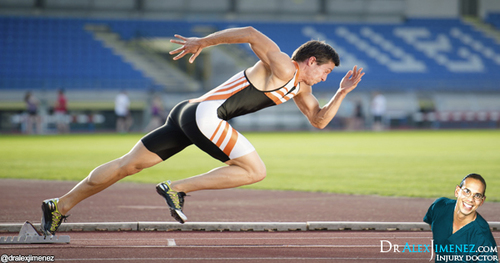
by Dr Alex Jimenez DC, APRN, FNP-BC, CFMP, IFMCP | Chiropractic

During single extremity weight bearing exercises, such as stance phase of walking or running, lunging and landing from a jump, amongst others, the lower extremity joints are designed to naturally absorb the impact of gravity being placed against the body. When the force of gravity acts upon the body, the joints move into distinct directions and the muscles need to properly function as to counteract these forces. Generally, these muscles function isometrically and/or eccentrically. For instance, with the absorption movements of a pelvic lateral tilt, the hip abductors work to stabilize the movement. With an anterior pelvic tilt absorption movement, the pelvic posterior tilters such as the gluteals and hamstrings work to stabilize mobility. With hip joint flexion, adduction and internal rotation, the muscles are controlled by the gluteus medius and other hip joint external rotators, such as the gemellus muscles, quadrutus femoris, obturator muscles and the piriformis. And finally, the quadriceps controls the absorption movements of a knee joint flexion, the soleus of an ankle dorsiflexion and the tibialis posterior, FHL and FDL, stabilizes midfoot pronation.
The gluteus medius is a proximal hip muscle which purpose is to control proximal pelvic/hip joint motion that in turn controls lower limb kinetics around the knee and ankle. The gluteus medius attaches to the iliac crest and inserts onto the greater trochanter, functioning as a hip abductor, hip external rotator and stabilizer of the pelvis on the femur during stance phase of gait. It�s most significant role, however, is to compress the femoral head into the acetabulum during the stance phase of gait. The muscle is divided into three equal parts: anterior, middle and posterior.
The fibres which make up the posterior section of the muscle travel parallel with the neck of the femur while the middle and anterior sections travel vertically from the iliac crest to the anterosuperior feature of the greater trochanter. It�s been suggested, that each individual part of the muscle functions independently from each other as each of the three portions contain their own supply of nerves which run through the superior gluteal nerve.
Dr. Alex Jimenez D.C.,C.C.S.T’s insight:
The gluteus medius plays an important role in stabilizing the pelvis during the stance phase of gait and it also functions to control the sagittal, frontal and coronal planes of movement of the lower extremities during stance phase. An injury or condition affecting the gluteus medius can frequently be associated with a wide variety of musculoskeletal syndromes, including back, hip and knee complications.For more information, please feel free to ask Dr. Jimenez or contact us at (915) 850-0900.�
See on elpasochiropractorblog.com
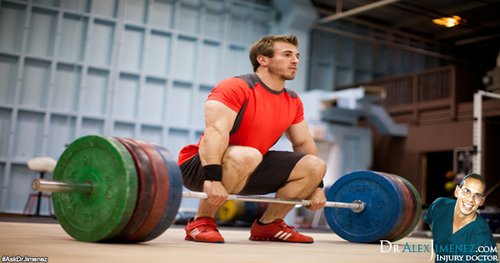
by Dr Alex Jimenez DC, APRN, FNP-BC, CFMP, IFMCP | Chiropractic

Lumbar spine disc herniation is a well-known type of injury which often causes impairing low back pain, however, it can also compress the nerve roots in the area and generate radicular pain and other symptoms along the lower extremities, such as altered sensations and muscle weakness. Furthermore, this type of injury will not only affect the athlete�s ability to perform during their specific sport or physical activity, it may also become chronic and affect the athlete in the future.
Conservative treatments are frequently utilized when managing lumbar disc herniation in athletes, although surgical options may be considered if the injury is too severe. Many elite athletes often request faster recovery methods for their type of injuries and symptoms in order to minimize their time spent away from training and competition. As a result, a wide number of athletes will seek surgical alternatives earlier than recommended, provided they meet the criteria for lumbar spine surgery. The most popular surgical procedure for athletes with a low back disc herniation is the lumbar disc microdiscectomy.
The intervertebral discs of the lumbar spine perform an essential biomechanical role within the spine. These function to provide mobility between the segments of the spine while distributing compressive, shear and torsional forces. These discs are made up of a thick, outer ring of fibrous cartilage, known as the annulus fibrosis, which surround the gelatinous core of the disc, known as the nucleus pulposus, which is contained within the cartilage end plates.
Each intervertebral disc consists of cells and substances, such as collagen, proteoglycans and scattered fibrochondrocytic cells, which function to absorb and conduct increased forces from body weight and muscle activity. In order to effectively perform its function, the disc depends immensely on the structural condition of the annulus fibrosis, nucleus pulposus and the vertebral end plate. If the disc is healthy, it will evenly spread the forces being applied against the spine. However, disc degeneration caused by cell degradation, loss of hydration or disc collapse, can decrease the disc�s ability to withstand external forces and these will no longer be absorbed and conducted evenly across the spinal structures.
Dr. Alex Jimenez D.C.,C.C.S.T’s insight:
Among the young college athletes and professional athletes alike, low back pain is considered to be one of the most common complaints, estimated to affect more than 30 percent of athletes at least once in their career. A wide number of back injuries can affect the athlete, including muscle spasms and stress fractures and disc herniation. For more information, please feel free to ask Dr. Jimenez or contact us at (915) 850-0900.�
See on elpasochiropractorblog.com
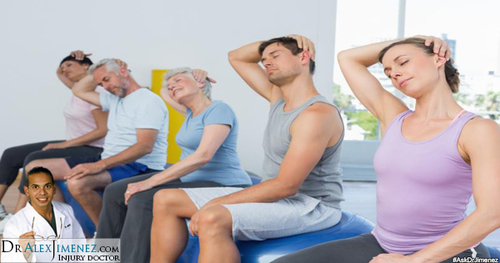
by Dr Alex Jimenez DC, APRN, FNP-BC, CFMP, IFMCP | Chiropractic

The predominance of neck injuries in sports is believed to be rising, mostly due to the increased improvements in injury recording and observation. However, the growth of physical, extreme sports has led to higher risks of injury among unprepared athletes.
For instance, athletes who participate in sports such as skeleton, where individuals sprint on ice and hurtle head first down an icy, often bumpy track at elevated speeds, must learn to understand the importance of properly training their neck to avoid complications to its surrounding structures. Neck injuries are common in skeleton but these can be prevented. Neck training doesn�t simply involve avoiding the risk of suffering a neck complication, in competitive sports, such as skeleton, strengthening the neck can ultimately improve an athlete�s overall physical performance, helping them achieve their goals of triumph.
In order to decrease the chance of injury, the neck needs to be strategically and individually prepared to ensure it has a greater tolerance to the increased loads it�s exposed to. But, before an athlete begins implementing this program, it�s essential for them to receive an accurate evaluation of their cervical spine in a comprehensive assessment and screening process.
Neck injuries occur most frequently in motorsports and high impact, collision sports like rugby. It�s been previously described that acute force exposure through compression and distraction, axial loading and/or direct blows along with sudden acceleration and deceleration of the structures of the body, are the most common reasons for injury in these types of sports.
Dr. Alex Jimenez D.C.,C.C.S.T’s insight:
Approximately 50 percent of the overall population may experience neck pain at some point in their lifetimes, with sports-related injuries accounting for about 10% of all neck injuries and symptoms. The cervical spine is a region which requires more concentrated attention than it usually receives, especially in the presence of a neck injury along with symptoms that can alter an individual’s athletic performance. For more information, please feel free to ask Dr. Jimenez or contact us at (915) 850-0900.�
See on elpasochiropractorblog.com
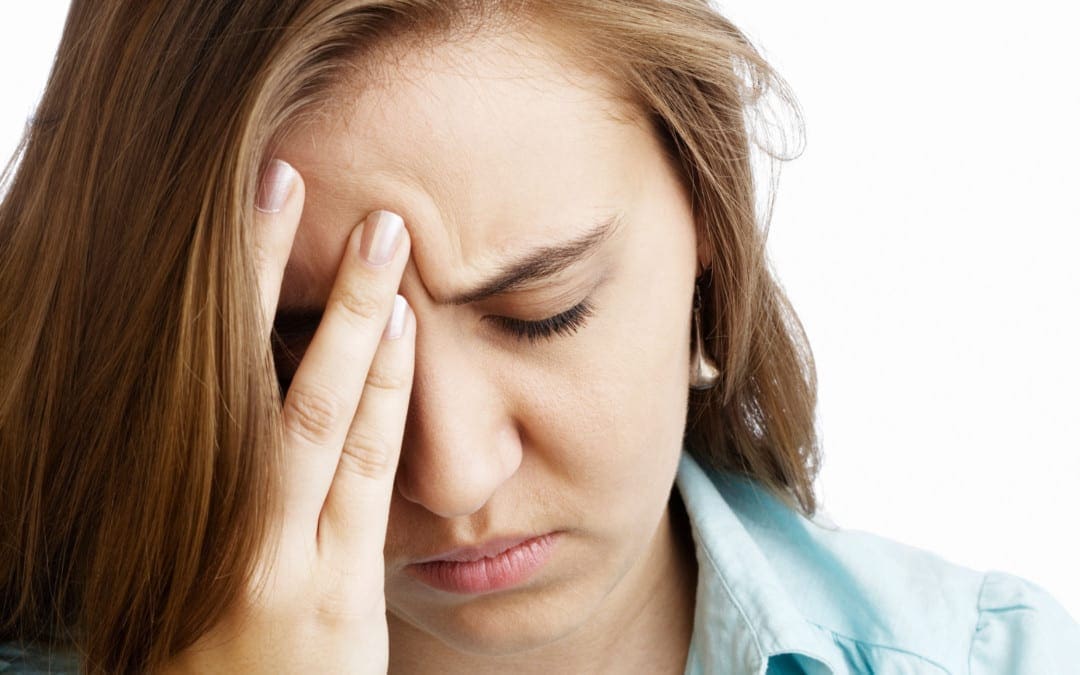
by Dr Alex Jimenez DC, APRN, FNP-BC, CFMP, IFMCP | Chiropractic, Scoop.it
A number of studies have shown a link between anxiety and fibromyalgia, however, the nature of the link is not yet understood. Some experts, according to a report, “Fibromyalgia,” in The New York Times, “believe that fibromyalgia is not a disease, but is rather a chronic pain condition brought on by several abnormal body responses to stress.” Others believe that physical injuries, emotional trauma or viral infections, such as Epstein-Barr trigger the disorder.
Fibromyalgia causes widespread and chronic pain the joints and symptoms are similar to arthritis, however, unlike arthritis, there is no inflammation in the joints. Karen Lee Richards, a patient expert at HealthCentral.com, states the additional symptoms of fibromyalgia include:
- Fatigue
- Sleep Problems
- Cognitive Dysfunction
- Sensitivity to Cold and/or Heat
- Depression
- Anxiety
- Digestive Problems
- Headaches
- Hypersensitivity
The Anxiety Disorders Association of America indicates that approximately 20 percent of those with fibromyalgia also have an anxiety disorder or depression. Studies put this number anywhere between 14 percent and 42 percent. While dealing with a chronic disease is certainly stressful, there may be physical causes of the increased levels of anxiety.
Cortisol is a hormone produced by our bodies when we are under stress. However, when under chronic stress, our cortisol levels can become skewed. Patients with fibromyalgia may have lower levels of this stress hormone resulting in muscle aches, fatigue, high blood pressure and anxiety. Reducing stress can often normalize cortisol levels.
Serotonin, a chemical “messenger” found in the brain is linked to feelings of well-being, adjusting pain levels and promoting sleep. Some patients with fibromyalgia have lower than normal serotonin levels.
Sleep problems are also common in those with fibromyalgia. Lack of sleep can increase feelings of anxiety and depression.
The Role of Anxiety in Your Life and Illness
Because dealing with any chronic illness causes stress, you may believe that anxiety is simply something you must deal with, however, in fibromyalgia there is evidence that stress and anxiety actually increase symptoms and make it more difficult to cope with those symptoms.
If you are suffering from depression or anxiety, you may feel hopeless and helpless. You may be less apt to seek or follow treatment, believing there is nothing you can do to make it better. You may not be willing to make lifestyle changes that can help improve symptoms.
When you have a chronic medical condition, it doesn’t just impact your health. Often you can’t work or miss time at work, you may have financial problems. Relationships frequently suffer when one partner is sick. While these can be true for all chronic conditions, when you add in depression or anxiety, common in patients with fibromyalgia, coping is even more difficult.
It is important to talk with your doctor about how you are feeling emotionally as well as physically. Your doctor may recommend treatments including medication, physical and occupational therapy to treat the symptoms of fibromyalgia. He may also suggest antidepressants to help treat your anxiety symptoms.
Lifestyle changes including getting the proper amount of sleep and exercising. According to the Anxiety Disorders Association of America, a Harvard Medical School study indicated that strength training, aerobic activity and flexibility training were effective at helping women with fibromyalgia feel better both physically and emotionally.
Sourced through Scoop.it from: www.healthcentral.com
As a widely misunderstood chronic condition causing pain and fatigue among a number of people, fibromyalgia still remains a highly misunderstood condition. According to researchers, the painful condition not only causes the above mentioned symptoms, it can also cause symptoms of anxiety to develop.
For more information, please feel free to ask Dr. Jimenez or contact us at 915-850-0900�.

by Dr Alex Jimenez DC, APRN, FNP-BC, CFMP, IFMCP | Chiropractic

Muscular imbalances around the complex structures of the shoulder can develop abnormal activation patterns and inherent myofascial restrictions, both which can cause a significant decrease in the athlete�s scapular control and dyskinesis, leading to glenohumeral joint injuries resulting from instability and impingement.
The serratus anterior, or SA, is one of the muscles of the scapula that functions by providing a connection between the shoulder girdle and the trunk, however, it�s often believed to be a dysfunctional muscle among shoulder pathologies. The serratus anterior is a primarily offers movement to the scapula, contributing to the maintenance of normal scapulo-humeral rhythm and motion. Due to its insertion on the inferior and medial border of the scapula, it can produce upward rotation and posterior tilting. Poor activation of the serratus anterior muscle may result in limited scapular rotation and protraction, causing a relative anterior-superior translation of the humeral head in relation to its glenoid articulation, leading to sub-acromial impingement and rotator cuff tears.
The serratus anterior is characterized as a flat sheet of muscle beginning from the lateral surface of the first nine ribs. Then, it passes behind and around the thoracic wall before inserting into the anterior surface of the medial border of the scapula. The most important function of the serratus anterior, or SA, is to protract and rotate the scapula, helping to maintain it close yet away from the thoracic wall, allowing for the proper positioning of the glenoid fossa to increase the efficiency of upper extremity motion to its maximum state. The anatomy of the SA can be broken down into three anatomical components as follows: Read more.
Dr. Alex Jimenez D.C.,C.C.S.T’s insight:
Shoulder pain is a common complication which affects many athletes who participate in overhead sports. Overhead, physical activities primarily utilize upper extremity movements that place tremendously high demands on the structures of the shoulder. The serratus anterior, or SA, is a muscle that plays an essential role in the movement and control of the scapula�and it’s crucial to strengthen it to avoid shoulder injury. For more information, please feel free to ask Dr. Jimenez or contact us at (915) 950-0900.�
See on elpasochiropractorblog.com

by Dr Alex Jimenez DC, APRN, FNP-BC, CFMP, IFMCP | Chiropractic

Many variations of SLAP lesions can primarily be treated conservatively with methods to initially improve the patho-mechanical factors that affect SLAP lesions, such as glenohumeral internal rotation deficit (GHIRD) and scapular dyskinesis. With a majority of type 1 lesions, this can be significantly effective in eliminating the symptoms of the lesion without the need for surgery. However, once an athlete has surgically treated their SLAP lesions, they can follow a similar rehabilitation process to achieve overall wellness.
Minor type-1 SLAP lesions may only require a simple debridement without disrupting the biceps anchor, whereas type-2 SLAP lesions are the most commonly seen type by many healthcare providers, involving a detachment of the biceps anchor from the labrum. Type-2 lesions can be treated with arthroscopic fixation of the superior labrum to develop biceps anchor stability.
Type 3 SLAP lesions are identified by bucket-handle tears along the superior labrum with intact biceps anchor. This bucket handle fragment can easily be debrided by an arthroscopic shaver, and further treatment may often not be needed. The other types of SLAP lesions are not as common as the type 2 lesions, although if they do occur, these will almost certainly require surgical intervention.
A large database study found that the highest incidence of repair is among the 20-29 years and 40-49 years of age groups. This is believed to occur due to the younger population�s higher participation in sports activities. In the 40-49-year-old group however, the high incidence most likely occurs due to the degeneration of the labrum, which may primarily develop around this age. Also men have a three times higher incidence of repair. This is believed to occur due to how males are more likely to participate in a sport which may cause SLAP lesions. �
Dr. Alex Jimenez D.C.,C.C.S.T’s insight:
When it comes to SLAP lesions, a common type of shoulder injury among athletes, there are numerous types of treatment options available for the affected individuals. According to the type of lesion, the age of the individual and the functional level of the athlete, a specific treatment plan may be prescribed for these SLAP lesions. For more information, please feel free to ask Dr. Jimenez or contact us at (915) 850-0900.�
See on elpasochiropractorblog.com

by Dr Alex Jimenez DC, APRN, FNP-BC, CFMP, IFMCP | Chiropractic

The semitendinosus, or ST, the semimembranosus, or SM, and the biceps femoris long and short heads (BFLH and BFSH) are part of the hamstring muscle group. They primarily function with the extension of the hip and flexion of the knee as well as providing multi-directional stability of the tibia and pelvis. These three muscles which make up the hamstring muscle group, cross the posterior aspect of both the hip and the knee joints, making them bi-articular. As a result, they are consistently responding to large mechanical forces created by upper limb, trunk and lower limb locomotion as a means of concentric and eccentric mobilization. During sporting activities, these forces will tend to increase, augmenting the frequency of injury.
In a study conducted at the University of Melbourne, biomechanical analysts measured the musculotendinous strain, velocity, force, power, work and other biomechanical loads experienced by the hamstrings throughout the course of over-ground sprinting and compared the biomechanical load across each individual hamstring muscle.
Basically, the hamstrings are subjected to a stretch-shortening cycle when sprinting, with the lengthening phase occurring during the terminal swing and the shortening phase commencing just before each foot strike, continuing throughout the stance. Then, the biomechanical load on the bi-articular hamstring muscles were determined to be stronger during the terminal swing.
BFLH had the greatest musculotendinous strain, ST displayed considerable musculotendinous lengthening velocity, and SM produced the highest musculotendinous force and both absorbed and generated the most musculotendinous power. Similar research also distinguished peak musculotendinous strain as a large contributor to eccentric muscle damage or injury, most commonly acute hamstring injuries, instead of peak muscle strength. This is why eccentric strengthening is often a rehabilitation recommendation for acute hamstring injuries.
Dr. Alex Jimenez D.C.,C.C.S.T’s insight:
Several sports and physical activities which involve a high demand of excessive stretching or sprinting, including kicking, sliding and split positions, have been determined to increase the risk of acute hamstring injuries among athletes. Acute hamstring injuries vary greatly from one another and because of this, offering the proper recommendations regarding rehabilitation can be challenging. For more information, please feel free to ask Dr. Jimenez or contact us at (915) 850-0900.�
See on elpasochiropractorblog.com
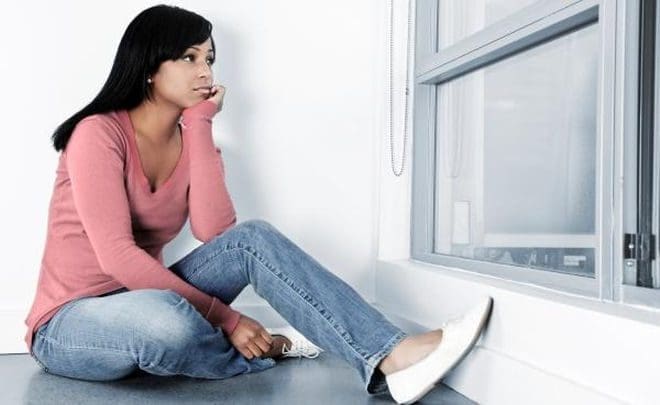
by Dr Alex Jimenez DC, APRN, FNP-BC, CFMP, IFMCP | Chiropractic, Scoop.it
Many people who battle fibromyalgia symptoms also deal with depression. Discover five fibromyalgia therapy strategies that may help relieve depression.
Most fibromyalgia patients are exhausted all the time and suffer from painful muscles and joints. But these aren�t the only common symptoms of fibromyalgia � at least one fourth of fibromyalgia patients also have some form of depression. In fact, adult fibromyalgia patients are much more likely than those without fibromyalgia to be depressed.
The link between fibromyalgia symptoms and depression makes sense. First, coping with the severe pain and fatigue of fibromyalgia can be frustrating and disruptive to your lifestyle. And fibromyalgia symptoms can also lead you through unchartered territory as you work through a maze of health care providers.
How Depression Can Make Fibromyalgia Symptoms Worse
Like other people with depression, fibromyalgia patients often experience a loss of interest in their favorite activities and feel lonely, tired, and sad.
�Depression makes pain worse and causes lots of fatigue and functional disability in fibromyalgia patients,� says Roland Staud, MD, professor of medicine, division of rheumatology and clinical immunology at the University of Florida in Gainesville. There is a strong correlation, Dr. Staud says, between pain and depression: �Alleviation of one leads to alleviation of the other.�
�Elizabeth W. Carson, PhD, a clinical psychologist on staff at St. Joseph�s Hospital in Atlanta, Ga., says she sees many fibromyalgia patients who are depressed as well as frustrated with their disease process. �Depression makes the patient more aware of the pain of fibromyalgia.�
While depression may be common in fibromyalgia patients, Staud says it is not common for people with fibromyalgia to be substance abusers. In fact, �There is no empirical evidence of substance abuse in fibromyalgia patients,� Staud says.
Fibromyalgia and Depression Therapy Option 1: Antidepressants
�There is no analgesic [pain reliever] to jointly treat pain and mood disorders,� says Staud. However, antidepressants are often used to treat fibromyalgia symptoms, with or without the presence of depression.
Two classes of antidepressants used to treat fibromyalgia symptoms are selective serotonin reuptake inhibitors (SSRIs) and combined serotonin and norepinephrine reuptake inhibitors (SNRIs). �SNRIs are more effective for treating both depression and fibromyalgia symptoms,� says Staud. �SSRIs have a lesser effect on fibromyalgia symptoms.� SNRIs include Effexor (venlafaxine) and Cymbalta (duloxetine). Examples of SSRIs include Celexa (citalopram) and Prozac (fluoxetine).
Fibromyalgia and Depression Therapy Option 2: Cognitive Behavioral Therapy
Staud also recommends cognitive behavioral therapy for fibromyalgia patients who are dealing with depression. For fibromyalgia patients, the goal of cognitive behavioral therapy is to change how you think about pain and in turn change how you deal with the pain.
Carson says she uses this therapy to address negative thinking. �By retraining patterns of thinking, you can help the patient change his or her behavior and how they deal with their fibromyalgia.�
Fibromyalgia and Depression Therapy Option 3: Counseling
Counseling, another type of psychological therapy, can take place in group sessions, in which patients meet with a therapist and exchange experiences and ideas, or as one-on-one discussions with a therapist.
During these group or individual sessions, patients discover strategies for coping with pain or tackling other issues related to depression and fibromyalgia symptoms. �Group therapy is more economical and helps, but individual therapy is more effective,� says Staud.
Fibromyalgia and Depression Therapy Option 4: Self-Help
�Depression is a form of exhaustion,� says Carson. �With fibromyalgia, sleep is fragmented by pain, and circadian rhythms are disturbed.�
Getting into a regular routine of sleep and performing daily activities can help re-establish healthy circadian rhythms. �Sleep hygiene is really important in treating depression associated with fibromyalgia,� adds Carson.
Additionally, exercise such as walking, jogging, and riding a bike may benefit patients with depression. Exercise can help people feel better both physically and mentally.
Fibromyalgia and Depression Therapy Option 5: Easing Pain and Fatigue
Addressing the underlying fibromyalgia symptoms such as pain and fatigue may also help to relieve depression. Several prescription medicines are now available to treat fibromyalgia pain symptoms, including Lyrica (pregabalin) and Savella (milnacipran). Non-narcotic pain relievers such as tramadol are also prescribed for fibromyalgia pain.
By working with your doctor to find the right fibromyalgia therapy, you�ll be able to target all your fibromyalgia symptoms, including depression.
Sourced through Scoop.it from: www.everydayhealth.com
Fibromyalgia has long been characterized as a misunderstood condition which affects the normal function of the brain, spinal cord and nerves, causing widespread pain as well as fatigue as a result. Many individual’s frequently describe these prevalent symptoms, however, others experience symptoms of depression. Depression can be linked to a variety or conditions, in this case, recent studies have concluded that fibromyalgia may become worse with depression.
For more information, please feel free to ask Dr. Jimenez or contact us at 915-850-0900�.
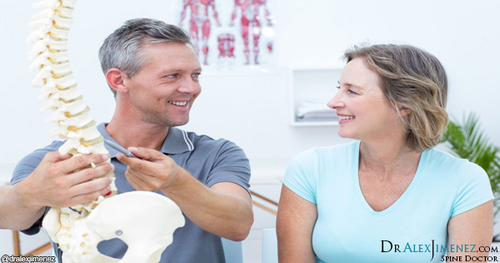
by Dr Alex Jimenez DC, APRN, FNP-BC, CFMP, IFMCP | Chiropractic

The spine is a complex structure consisting of many vertebrae which are stacked upon one another and each of these bones are separated by spinal discs. The vertebral disc in the spine primarily function as a shock absorber between the adjacent vertebrae. Spinal discs also act as ligaments to hold the vertebrae of the spine together and as cartilaginous joints which allow for slight mobility in the spine.
Each disc is composed of two parts: the annulus fibrosus, a tough, circular outer portion which surrounds the inner core, and the nucleus pulposus, the soft, inner core consisting of a loose network of fibers. The structure of a healthy, vertebral disc is compared to that of a jelly doughnut. The complex composition of each disc evenly distributes the force and pressure which is applied on the spine. At birth, approximately 80 percent of the discs are composed of water and these must be well hydrated to function properly. However, as people age, the structures of the spine, including the discs, go through a natural process of degeneration which is generally the leading cause for disc complications.
As individual�s age, the spinal discs begin to dehydrate and become stiffer and fragile, causing the disc to be less able to adjust to compression and stress. While this is a normal process, the stage may be painful for some individuals and can ultimately cause a disc herniation, disc bulge and other issues within the discs of the spine.
Dr. Alex Jimenez D.C.,C.C.S.T’s insight:
Back pain is one of the most common symptoms reported by the majority of the population. For those individuals experiencing pain and discomfort, performing normal, daily activities can become a challenge. If the individual is experiencing constant�symptoms of�back pain, however, the source of their symptoms could be due to�a disc herniation or disc bulge. For more information, please feel free to ask Dr. Jimenez or contact us at (915) 850-0900.�
See on elpasochiropractorblog.com

by Dr Alex Jimenez DC, APRN, FNP-BC, CFMP, IFMCP | Chiropractic

The labrum increases the surface area of the acetabulum by 22 percent while it increases the volume by 33 percent, functioning accordingly to fasten the head of the femur while allowing it to rotate. From a cross-sectional view, the labrum is triangular in shape with an extra articular area of thick connective tissue which contains a rich supply of blood while the intra articular area majorly has no blood supply.
When the hip�s normal range of mobility extends beyond its limit, the labrum is stressed by a strong, compressive force and a tear at his point can ultimately affect the stability of the joint and distribution of weight or load. Furthermore, the labrum is considered a pain generating structure as numerous pain receptors are located in its superior and anterior regions. It is at the anterior surface where an ALT is most vulnerable to pressure along the end point of hip flexion. On another note, abnormal alterations within the structure, such as retroverted acetabulum and coxa valga, have been simultaneously recorded in up to 87 percent of individuals with labral tears. �
Dr. Alex Jimenez D.C.,C.C.S.T’s insight:
A majority of complications to the hip joint can often be related to acetabular labral tears, or ALT.�Labral tears in the joints of the hip account for hip and groin pain symptoms of individuals affected by the injury. Research suggests that an untreated ALT may increase the risk of degenerative hip arthritis, which has created a widespread interest within many healthcare professionals. For more information, please feel free to ask Dr. Jimenez or contact us at (915) 850-0900.�
See on elpasochiropractorblog.com

























